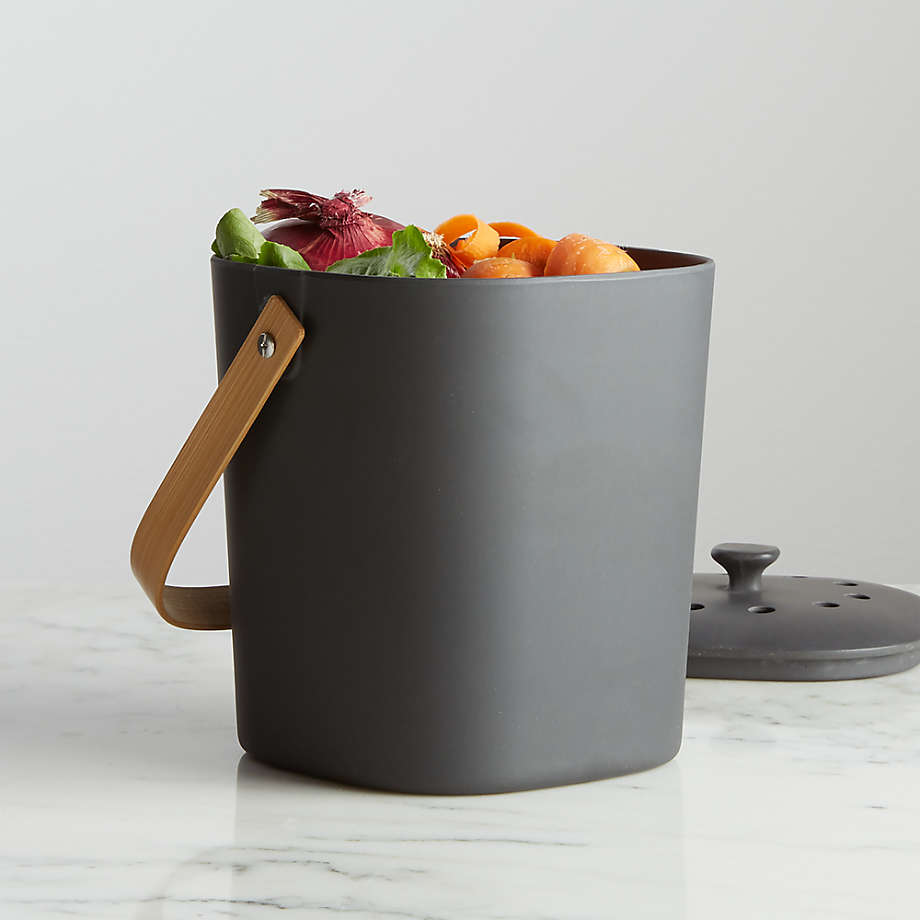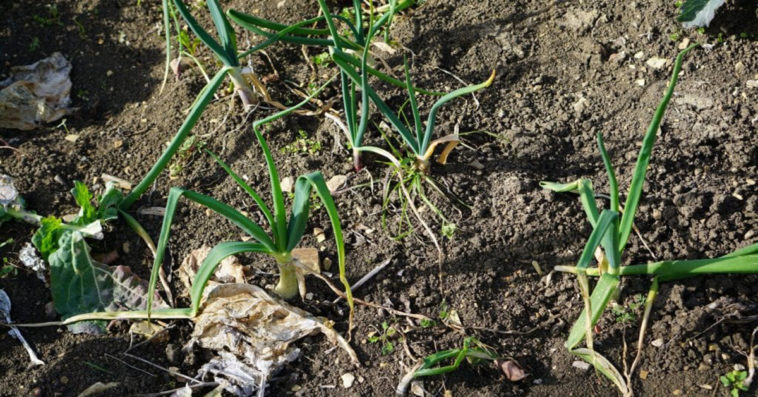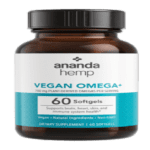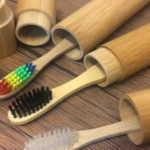There is no need for someone to spend much if they want to help the environment. You can start with simple, typically free practices. Practicing proper waste management is integral to sustainable living. Plus, it is simple to practice and easy to follow. You can also get sustainable tools. They can help you save your money and reduce waste in the process.
Another common practice that everyone must know of is composting. However, not everyone knows how to properly compost and perhaps, does not understand its purpose. I, myself, in the past, always confuse compost with segregation. Although, they are both quite similar in some sense, what differentiates both of them are the substances included.
To help you understand and practice composting at home or for your business, the Zero Waste Lifestyle System team interviewed several lifestyle bloggers, agriculture experts, gardeners, farmers, DIYers, and brands offering compostable products. Get inspired by their expert insights, derived from practicing composting for years.
What is composting?
Ryan Smith, a gardening expert, and owner of Ant and Garden Organic Pest Control says that “Composting is a process that converts organic materials like food scraps and leaves into more valuable organic fertilizer. You can use this organic matter to supplement your garden.” From the definition itself, basically, it does not take much of a person’s time. Why? Because organic materials such as food scraps can be composted and used as fertilizers.

Moreover, according to Niche Brislane, owner of Stag Valley Homestead out of southwest Nebraska, that composting may seem time-consuming and a long process. Thus, for beginners, it can be intimidating. She said, “Composting is quickly breaking down organic matter into rich, fertile soil by harnessing the natural microbial process nature already has in place.”
On a personal note, I believe that the stressful, hassle and perhaps difficult part in composting is having to deal with the odor that comes with the combination of different organic materials, at the same time the waiting process itself.

Apart from that, it can be as easy as stacking books. Moreover, she added that more gardeners should consider composting rather than spending on fertilizers with no guarantee of effectiveness. Niche Brislane says, “Many gardeners should consider composting for the fact that not only does it add to your overall soil health but makes a healthier environment for your garden to flourish all while reducing the amount of reusable ingredients you throw away every day.”
In addition, Michael Hill from Garden Guidepost, says the same thing about composting. He made mention that, “Mixture of ingredients that is used to fertilize soil is called compost.”
Why should you compost?
Composting offers a lot of benefits – both for you and the environment in general.
Reduce Municipal Waste

According to Mogale Modisane, a Renewable Energy Engineer and the CEO of ToolsGaloreHQ, “Composting is key because you can reduce municipal waste. As it has been shown that over 20% of all municipal waste is organic matter.”
Reduce Methane Gas Emissions
“The reason composting is important is because when food scraps go to the landfill, they don’t have the right conditions to quickly decompose. Instead, they end up rotting and creating methane gas. Too much methane gas in the atmosphere is one of the leading causes of global warming and climate change.” says Kristen McCalla, owner of Earth Friendly Tips.
Basically, it all boils down with the environment, and thinking about it thoroughly, everything that we do industrially affects our environment and either brings a good or bad impact.

Makes the Soil Healthier for Gardening
Also, people should start composting because it basically helps our soil grow healthier. “Compost provides essential nutrients for the garden soil. It makes the soil more fertile that helps plants to grow quickly” says Michael Hill, who has practiced composting for a long time.
Thus, it makes our gardening experience much better and healthier as all stuff combined in composting are pure organic – as long as you will not mix toxins and other chemicals in your compost, then you will definitely have a pure organic compost that will help boost the condition of the soil that is good for gardening.
Melanie Musson, a gardening expert with Expert Insurance Reviews says, “Composting reduces the amount of waste you send to the landfill. Composting also benefits you because when you add your compost to your garden beds, your plants will receive beneficial nutrients to help them grow.” Who does not want their roses and daisies at their full bloom without absorbing toxins, right?
Reduces Food Waste and Improves Food Security
Leslie Vincent, a Horticulturalist at Atkins Garden Centre made mention that, “Composting is a great step on the way to becoming self-sustainable, by recycling your own organic waste at home you’re eliminating a lot of harmful food waste which would otherwise end up in landfills. Compost also improves the overall health of your soil as it contains three major ingredients that garden plants need like potassium, nitrogen, and phosphorus.”

Parvathy Pothan of the Smart Home Guide also says, “The food waste from our family of four is sufficient for a small kitchen garden in our balcony where we have tomatoes, chilies, beans, and other vegetables.”
Besides, it is never too late to start as each day is another opportunity to learn and understand new things. Plus, composting can be done outdoors still in the comforts of your home.
How does composting work?
“During the composting process – a food web of microorganisms (and other creatures) devours the compost’s organic matter and breaks it down. The feeding cycle process results in phosphorus, potassium, and nitrogen-rich compost that plants love. The composting process is *aerobic* – meaning it requires an abundance of oxygen – which is why I advise regular compost pile circulation,” stated Elle Meager, Founder, and CEO of Outdoor Happens.

Apart from that, for composting to work, we also need the magic of light and time. According to Donagh Quigley, Founder of The Handmade Soap Company, “Lack of light and time are the two biggest “ingredients” in composting. Composting speeds up the decomposing by providing an ideal environment with the two factors above for organisms, bacteria, etc. to do their work, then resulting in a matter that is rich in nutrients.”
And for it to work faster if ever that you need to use it ASAP, the right exposure to the sun (light) can help in the speeding process.
Mogale Modisane also states, “Organic matter decays. This decay is caused by microorganisms eating organic matter. The microorganism uses water and oxygen from the air to multiply and grow through aerobic respiration. This process eventually creates a nutrient-rich mixture of living organisms, bacteria, and fungi.”

Niche Bislane shares, “The composting process is fairly simple in the fact that it only requires you to keep the ratio of dry or ‘brown’ matter to wet or ‘wet/hot’ matter in balance.
I personally find for my region which is high in humidity that 2 parts dry -we have animals so old bedding, straw, dead leaves, and old newspaper- to one part wet- our leftover fruits, veggies, and eggshells- works wonders to keep the moisture down.

A compost that is too wet fosters mold and swampy conditions which foster an unfavorable rate of decompositions, creating more favorable conditions for bad bacteria to root. Likewise, compost that is too dry inhibits any activity at all. Once this balance is achieved the breakdown begins with beautiful healthy compost.”
However, just like everything else, composting also has some restrictions such as what you can and cannot include in your compost.
What can you put in your compost?
You can compost just about any organic material from your yard or kitchen, such as fruit and vegetable scraps, leaves, paper, fireplace ashes, and grass clippings, says Kristen McCalla, a sustainable living expert.

Parvathy Pothan recommends vegetable scraps. Apparently, it is the safest suggestion that the latter would give for beginners. Cooked food could be messy especially when composting in the limited space of a balcony. Also, you need to layer vegetable scrapes with an ample quantity of brown leaves or cardboard pieces, or paper. If you don’t have sufficient brown materials, the pile will start to stink.
“There are endless things you can put in your compost such as used coffee grounds, vegetable scraps, fruit bits, old peanuts and shells, eggshells, old paper products, animal manure, fireplace (wood) ashes, dryer lint, old rags, woodchips, and wool or fur (shedding season hits our homestead hard so annually there’s a mountain of wool and fur added)” Niche Brislane added.
On the other hand, you may add rabbit’s manure says Sarah Logan, owner, and editor of The Bunny Hub. “Garden plants respond well to this type of fertilizer, particularly when composted. Rabbit dung is dry, odorless, and in pellet form, so it can be used directly in the garden. Because rabbit dung degrades quickly, there is usually little risk of burning plant roots. Rabbit manure fertilizer is high in nitrogen and phosphorus, which are essential nutrients for plant growth.

Using rabbit manure compost in the garden is an excellent way to provide plants with the nutrients they require for healthy growth. There is no risk of burning plants when using composted rabbit manure fertilizer. It is safe to use on all plants and is simple to apply.”
What can you not put in your compost?
Dairy, meats, fats, butter and oils, charcoal, ash, or any part of the black walnut. These are Niche Brislane’s suggestions on what you should not include in your compost. She says all of these can throw off the microbial system and cause the wrong kind of spoilage. Inviting parasites, viruses, bad mold, and other unhealthy additions to your compost.

Gardening expert Ryan Smith cautions against adding these things to your compost:
- Do not add fish and meat into your pile, as they will attract rodents and other pests. They stink, too.
- Do not add plants with diseases that can be spread through your compost.
- Don’t add pet manures if you want to use your compost for your plants to prevent the risk of transmitting Salmonella.
- Do not add onion scraps. The onions’ natural chemicals can slow down the decomposition process by harming worms and microorganisms.

Elle Meager also recommends avoiding adding weeds, cats’ litter, human waste, sick garden plants with potential pesticide exposure.
How to choose a composter?
Composting can be typically done outdoors in your backyard. But, if you don’t have room for an outdoor compost pile, you can compost materials indoors using a special type of bin. Made of biodegradable, dishwasher safe, and durable bamboo fiber, you can combine sustainability and style
with Bamboozle’s Composter.

Donagh Quigley states, “With at-home composting there is various composter out on the market that can suit your various needs – the size of your garden space, how much you are planning to compost, where do you plan to compost, what kind of space do you have for it? At The Handmade Soap Company, we have large bins we have made out of pallets to suit our composting needs.”
Elle Meager says, “There are two variables you want to consider when choosing the perfect composter:
- The first is size – how much solid food waste do you intend on adding each week?
- Also, consider aeration – some of the newest composters provide a rotating feature that enables (nearly) effortless compost mixing.”
On the other hand, Melanie Musson suggests having a stationary compost bin as it is your cheapest option. However, in terms of mixing your compost, you will definitely need a spinning compost bin as the mixing process can be tricky. Also, if you do not have enough outdoor space where to begin the composting process – as composting is usually done outdoors – you may perhaps consider purchasing an indoor compost bin.
Basically, it all depends on what organic materials you are composting and what works well for you.
How to get started with composting?

Bamboozle’s Tips
To compost successfully, you will need three components (Browns, Greens, and Water:
Brown Material: This is made up of items like broken twigs, dead leaves,
and dry tree branches.
Green Material: This includes things like grass clippings, fruit & vegetable scraps, and shredded newspaper.
Water: Maintaining the right amount of moisture will help turn compost into nutrient-rich material for your garden.
Michael Hill’s Beginner Tips

You can always begin with simple things such as what you can find in your kitchen, just like what Michael Hill said. “First you’ll need to put in a layer of soil in a compost bin with drainage system then you have to put the kitchen waste inside the pot. Finally, put another layer of soil to cover it up. Give plenty of water and leave it in shade. After one month the waste would turn into organic compost that can be used in gardens or flower pots.
First, start with a small amount from your home kitchen waste gradually step up to a bigger compost bin. Master the process before investing in buying components for composting.
Try to make compost in batches instead of making all of them at the same time. This way you won’t run out of them totally. Don’t move the compost bin too much. Make sure you water them as needed.”
Ryan Smith’s Tips
1. Choose a spot for your compost. An outdoor compost is ideal if you have a backyard. If you’re living in an apartment where space is limited, a five-gallon container is recommended.
2. Spread a bed of bare earth in your container first to give worms and other microorganisms a perfect place in your pile.
3. Layer your materials: your greens and browns. The greens are those that add nitrogen, which includes food scraps like vegetable scraps and fruit peels. Coffee grounds also fall in this category. Browns refer to materials that add carbon, such as paper and dried leaves.
Don’t forget to shred paper before adding it to your compost bin. Layer your materials starting from browns, then greens above them to promote good drainage. Greens are typically wet materials and browns dry.
4. Turn your pile to aerate it, thus adding oxygen into your compost. Nitrogen, carbon, and oxygen are essential for the composting process to work.
5. If you live in a dry climate, water the pile enough to make it moist but not soggy.
6. Balance your greens with your browns. Too many greens will make your pile soggy and stink.
Niche Brislane’s Starter Guide:
Once you’ve become familiar with what can and shouldn’t be added to your compost get started with a small bin, layering your dry and wet ingredients. Once done if necessary wet it down a little with a cup or two of water and leave it alone for a week. You should be able to feel a rise in temperature from the bin within a week and you’ll know the process has begun.
Once the microbial process has started it tends to work from the bottom up, fully composting each layer before moving its way up. You can speed the process along some by turning or mix it every so often (we have mounds on our farm that we turn by hand or tractor with pitchforks once a month) This incorporates the newly added materials into the active layer of your compost speeding up the process.
Sarah Logan’s Bunny Tips
Add some rabbit dung to the compost pile for extra growing power. Composting rabbit manure is a simple process that yields the ideal fertilizer for garden plants and crops.
Simply add your rabbit manure to a compost bin or pile, followed by equal parts straw and wood shavings.
You can also add grass clippings, leaves, and kitchen scraps to the mix (peelings, lettuce, coffee grounds, etc.).
With a pitchfork, thoroughly mix the pile, then use a hose to moisten but not saturate the compost
pile. Cover the pile with a tarp and turn it every two weeks or so, watering and covering again to maintain high humidity levels. Continue to add to the pile, turn the compost, and water it until the pile is completely composted.
Depending on the size of your compost pile and any other influencing factors such as heat, this could take anywhere from a few months to a year. To help speed up the decomposition process, add
some earthworms or entice them with coffee grounds.
Melanie Musson’s Tips To Start
Set a garbage bowl next to your sink as you prep food through the day; you can toss the compostable scraps into the bowl and make one trip a day to your compost bin.
Save shredded paper and dry grass clipping to alternate with your green material.
If you do it right, your compost pile won’t even stink, but if you don’t get it quite right, it will smell bad, but it will still compost even if it’s not quite as efficient. The best thing to do is to get started and learn as you go.
Elle Meager’s Beginner Tips
The first step – is to take inventory of what you toss in the trash every week.
The next step is to choose a location for your compost bin – I prefer as far away from your home as possible – within reason, of course.
The next step is to start assembling your first composted materials – you don’t have to start as the perfect composter, and you’ll improve your composting strategy over time!
Tips to have a successful compost routine:
Browns and Greens Should Be Balanced
One tip to have a successful compost routine is that your browns and greens should be in balance, says Jill Sandy, the Founder of Constant Delights. “Experienced composters emphasize paying attention to the nitrogen (greens) to carbon (browns) ratio, which Heft reinforces. It will smell terrible if you add too many food scraps or ‘green’ stuff vs. ‘brown’ material.
The inverse is also true. Add extra food scraps or ‘green’ stuff if your pile isn’t degrading. It’s all about finding the right balance when it comes to composting. If you’re having problems with flies or odor, the nitrogen in the green material is causing an overabundance of enzymes. There aren’t enough greens if it moves too slowly. Aim for a one-third green, two-thirds browns ratio.”
Niche Brislane’s Tips
1. Always make sure you’re putting into your compost the things it will thrive on, no oils, dairy, meats, or fats.
2. Turn your compost to give microbes access to the whole compost so they can work faster.
3. Keep an eye on your moisture. Hydration is the most important factor for the entire process, to dry and your compost slows down, too wet and it grows unhealthy.
4. Get creative with your dry materials, cardboard, used paper towels, dead leaves, and woodchips. All have their beneficial place.
5.Consider two compost piles and leaving one as a longer-term pile that you can add to new compost and kick off the process with already active microbes.
6.You can identify weaknesses in your garden soil and amend your compost to be nutritionally heavy in whatever your garden’s weaknesses are by what you add. Low in nitrogen? add chicken poop! High in nitrogen? add wood ash. Get more familiar with your soil and what it needs. and lastly
7. It’s always recommended to seek out a local master gardener or local nursery for any questions and guidance for environmental factors that can affect your compost such as annual rainfall, humidity, heat, or so on.
Elle Meager’s Tips
Keep your eyes on the prize – and motivate yourself to *restock your garden’s soil* with vital nutrients.
Each year – all of those colorful, vibrant, robust, thick veggies that you grow take *boatloads of nutrients* from the soil.
Never forget that composting is one of the best ways to replenish those nutrients back into your garden soil – your veggies and garden flowers are counting on you!
Conclusion
Hopefully, this takes the seemingly complex nature of composting and makes it more appealing to new gardeners. It’s the most ecologically friendly job you can do on a micro-scale to give health back to the soil while reducing your own waste.
Composting refers to the Rot in the 5 Rs (Refuse, Reduce, Reuse, Rot and Recycle). This is an activity worth doing. It is not just something you can do for free or with little investment, depending on where you live. You also save money and reduce waste in the process of composting.
Learn from the composting tips discussed above by experts. Start by understanding what it means to compost, how it works, and the things you can and cannot put in your compost pile. Take it one step at a time. Think of this as something you can do to help nature heal, even from the comfort of your home.
Do this together with other low-waste practices such as refusing frivolous purchases, consuming less meat, and saving energy at home and in your business. Go zero waste at your own pace.





You know what they say, knowledge is power! Thank you for posting this article. These tips are really great and helpful for composting!